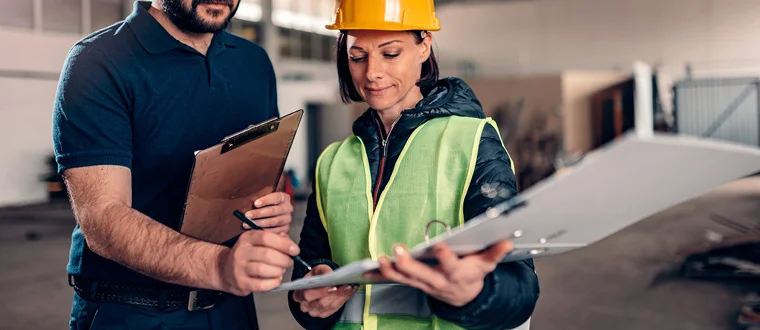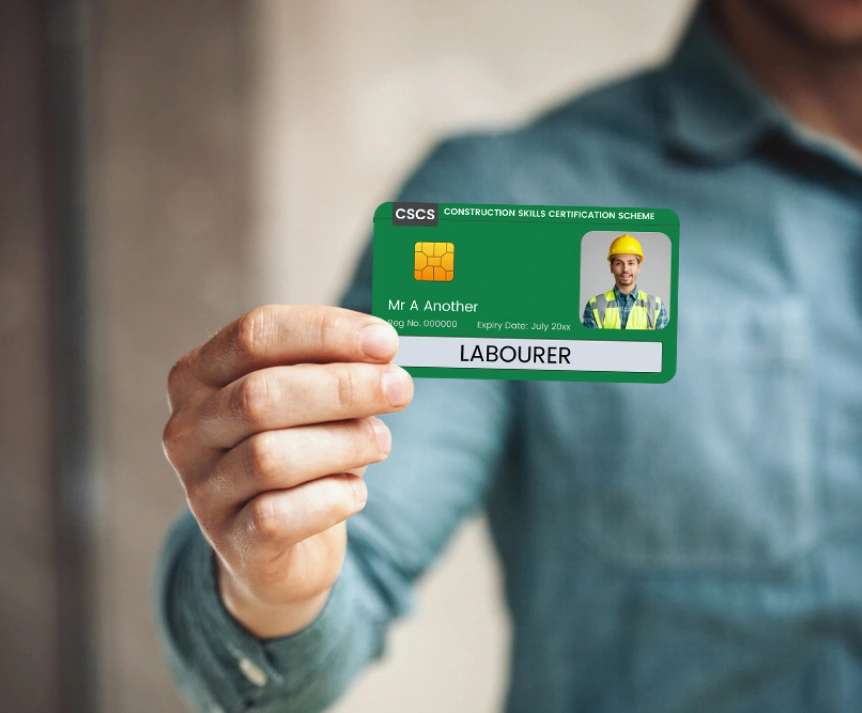
Few other sectors have a variety of risk factors that are present in the construction industry. Workers must operate heavy machinery and vehicles, work at heights, conduct routine manual labour tasks, and deal with several hazards at work.
While all businesses in the UK are required by law to ensure their workers’ health and safety, managers, head contractors, and supervisors must take extra care. Employers can ensure that there is always a qualified person on-site with the knowledge, experience, and abilities required to manage health and safety issues by designating a health and safety officer.
Safety officers are essential to maintaining the security of construction sites for workers and visitors. They seek to identify, manage, and reduce hazards that may arise on-site and ensure that all health and safety guidelines are being adhered to.
The functions and responsibilities of health and safety officers will be discussed in more detail in this article. Additionally, we’ll examine current health and safety challenges and trends in the building sector and offer connections and other helpful resources for anyone interested in learning how to work as a health and safety officer in the construction industry.
Roles of a Safety Officer in Construction
Even though each workplace is unique, all construction sites have several functions and responsibilities for health and safety officers.
These responsibilities include:
Risk Assessments and Site Inspections
On a construction site, the health and safety officer should conduct routine inspections and assessments to recognise and assess potential dangers. Then, they must seek to reduce these hazards and implement health and safety policies and practices that safeguard employees.
Compliance Monitoring
According to health and safety authorities, supervisors and employees must follow all applicable health and safety laws, rules, and procedures. Additionally, a health and safety officer needs to ensure that any supplies or equipment providers are according to the law.
Accidents & Incident Investigation
The health and safety officer must carry out a comprehensive investigation after every accident or near-miss incident. The inquiry aims to determine what caused the incident or accident and find evidence of equipment malfunctions, legal violations, or procedural mistakes. The health and safety officer may need to speak with witnesses and, if feasible, the victim or victims throughout the interview process.
The officer should write a report after the investigation is finished and, if necessary, submit it to the appropriate authorities. Health and safety practices should be improved using the report’s data to prevent future mishaps or accidents.
Record Keeping and Reporting
Keeping thorough records of all risk assessments, site inspections, investigations, and compliance infractions is one of a safety officer’s key responsibilities on a construction site. The health and safety officer must generate and submit reports as necessary to authorities, including the recently established Building Safety Regulator (BSR).
Organising Health & Safety Training
The health and safety officer should make arrangements for staff at all levels to acquire the necessary, approved health and safety training to safeguard workers’ health and safety and maintain compliance with rules.
Health and safety officers must ensure they keep up with all relevant standards and governmental laws due to the wide variety of jobs that are constantly done on any construction site. Health and safety officers should frequently take refresher training courses and ensure they are aware of any changes to pertinent legislation to maintain their expertise.
Growing Concerns for Safety in Construction

One of the largest industries in the UK economy is construction. According to recent official statistics, 3.1 million workers, or 9% of the entire UK workforce, are employed in construction-related jobs. With a 6%+ contribution to the UK’s gross domestic product (GDP), the building sector is another important economic driver.
The construction business is one of the most hazardous to work in and one of the largest. According to the most recent data from the Health and Safety Executive (HSE), there were just under 40 fatal injuries to construction employees, 61,000 non-fatal injuries, and 74,00 health issues related to their jobs.
Common Hazards in Construction
The majority of fatal injuries occurred were as a result of height falls. Slips, trips, and falls were the main contributors to non-fatal injuries. Health and safety officials in the construction sector continue to prioritise ensuring that every worker has a solid and secure platform on which to carry out their tasks.
The following are the most typical risks construction workers encounter:
- Falling from a great height
- Stumbling and slipping
- Being hit by or pinned beneath moving items
- Syndrome of hand-arm vibration
- Accidents involving materials and manual labour
- Tunnelling trenches
- Diseases caused by asbestos
- Electricity risks
- Materials and fibres in the air
Safety Trends in Construction
Health and safety officials increasingly rely on modern technology to reduce dangers in the construction sector and make job sites safer for employees. Wearable devices that track a worker’s blood pressure, pulse rate, and oxygen levels to prevent weariness or warn managers of mishaps are among the upcoming safety trends in the construction sector.
Additionally, sensors built into wearable technology can alert employees when they are too close to machinery or in danger of falling. Geo-location tracking can give managers access to real-time information about specific employees’ whereabouts and quicker accident response times.
Artificial intelligence (AI) software can now give video-based real-time object recognition to identify potential threats on-site. Drones and automated robots can monitor construction sites and inform health and safety officials of any emerging dangers or incidents.
On websites, e-Checklists are also growing in popularity. These make record-keeping easier, guarantee best practices are followed, and enable on-the-job training.
Construction Safety Officer Training
A degree is not required to work as a health and safety officer. To ensure you can do the work well, you will need experience, knowledge, and training. There are several methods to advance your skill set if you are a health and safety officer or are thinking about becoming one.
Many climb the ladder to the position over time, developing the necessary abilities while working in the field. Training programmes like IOSH Safety, Health & Environment for Construction Site Managers or some of the more in-depth courses provided by the National Examination Board in Occupational Safety and Health (NEBOSH) can help to assist this further.
There are also shorter courses available to aid in developing your understanding of the systematic risks and duties you will need to do as a health and safety course.
Anyone working in construction should take the following online health and safety training courses that Hurak provides:




